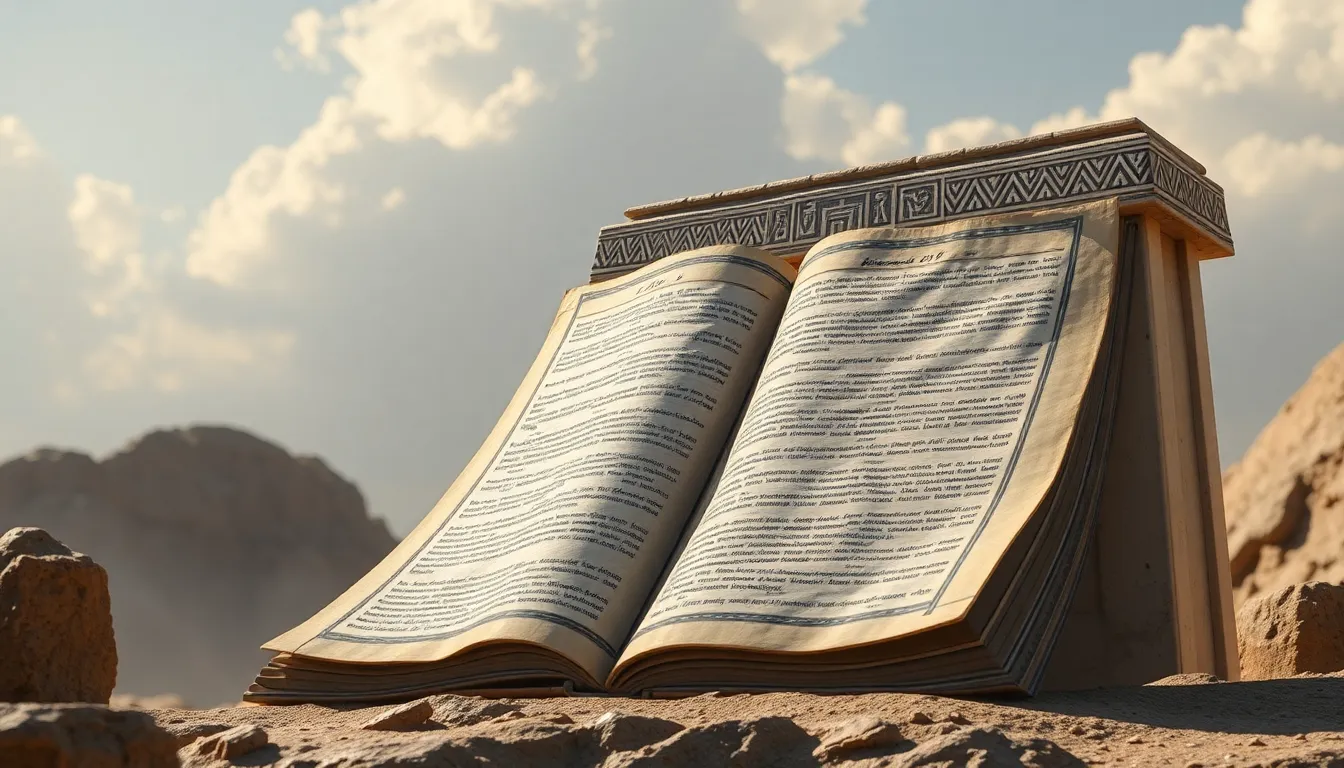The Importance of Sacred Texts in Egyptian Rituals
I. Introduction
In ancient Egypt, sacred texts held a profound significance, serving as the cornerstone of religious and cultural practices. These texts were not merely written words; they were believed to embody the divine essence and provided a pathway to the gods. Their importance in rituals cannot be overstated, as they shaped the spiritual landscape of Egyptian society.
Rituals were integral to Egyptian culture, serving as a means of connecting the earthly realm with the divine. Through rituals, Egyptians sought favor from their gods, ensured the safe passage of the dead to the afterlife, and marked the cycles of nature and life. This article aims to explore the role of sacred texts in these rituals, highlighting their historical context, types of rituals, functions, language, and modern legacy.
II. Historical Context of Sacred Texts in Ancient Egypt
The origins of sacred texts in ancient Egypt can be traced back to the earliest dynasties, evolving over millennia into complex compilations of religious and philosophical thought. Initially inscribed on temple walls and monuments, these texts later transitioned to papyrus scrolls, allowing for greater accessibility and dissemination.
Among the key texts that emerged were:
- The Pyramid Texts: The oldest religious texts in the world, inscribed in the burial chambers of the pyramids, intended to assist the deceased in their journey to the afterlife.
- Coffin Texts: These texts expanded upon the Pyramid Texts, found within coffins, offering spells and instructions for the deceased.
- The Book of the Dead: A collection of spells intended to guide the dead through the afterlife, ensuring safe passage and protection from malevolent forces.
The preservation of these texts was primarily the responsibility of priests and scribes, who meticulously copied and maintained the sacred writings, ensuring that the wisdom of the ancients was passed down through generations.
III. Types of Rituals in Ancient Egyptian Practices
Ancient Egyptian rituals can be categorized into several types, each with unique purposes and significance:
- Funerary rituals: These were crucial for ensuring the deceased’s safe passage to the afterlife, involving elaborate ceremonies and the recitation of sacred texts.
- Daily temple rituals: These rituals included offerings to the gods, invoking their blessings and maintaining order in the cosmos.
- Festivals: Often linked to agricultural cycles, these celebrations honored the gods and marked seasonal changes, reinforcing the connection between deities and the natural world.
IV. Function of Sacred Texts in Rituals
Sacred texts served multiple essential functions within rituals:
- Instructional role: They provided guidelines and procedures for conducting rituals, ensuring that each action was performed correctly to gain divine favor.
- Protective function: Many texts contained spells and prayers designed to offer safety and guidance, shielding individuals from harm and malevolent forces.
- Theological significance: Sacred texts affirmed the beliefs and cosmology of the Egyptians, reinforcing their understanding of the universe and their place within it.
V. Language and Symbolism in Sacred Texts
The language of sacred texts, predominantly hieroglyphics, was rich in meaning and symbolism. Each sign carried not just a phonetic sound but also a deeper significance, often representing divine concepts or natural phenomena.
Symbolic imagery played a crucial role in the ritual practices of ancient Egypt. Common symbols included:
- The ankh: Symbolizing life and immortality.
- The scarab beetle: Representing regeneration and protection.
- The Eye of Horus: A symbol of protection, royal power, and good health.
This relationship between language and divine communication was a key aspect of Egyptian spirituality, as it was believed that the correct recitation of texts could invoke the presence of the divine.
VI. Case Studies of Specific Rituals and Their Texts
Several specific rituals exemplify the importance of sacred texts:
- The Opening of the Mouth ceremony: A crucial funerary rite aimed at reanimating the deceased, involving the recitation of spells from the Pyramid Texts to restore the senses.
- The Weighing of the Heart ritual: In this judgment event, the heart of the deceased was weighed against the feather of Ma’at, with texts guiding the process to determine the soul’s fate.
- Festivals like Opet: Texts associated with these celebrations detailed the rituals performed to honor the gods, emphasizing their role in the agricultural calendar.
VII. The Legacy of Egyptian Sacred Texts in Modern Spirituality
The influence of Egyptian sacred texts extends into modern spirituality, inspiring various contemporary religious practices. The revival of interest in ancient Egyptian spirituality has led to:
- Influence on contemporary religious practices: Many modern spiritual movements draw upon Egyptian beliefs, incorporating elements of its mythology and rituals.
- The revival of interest: Academic and public interest in Egyptian texts has surged, resulting in translations and reinterpretations that make these ancient writings accessible to a broader audience.
- Academic and cultural significance: Scholars continue to study these texts, providing insights into ancient Egyptian cosmology and its relevance today.
VIII. Conclusion
In summary, sacred texts in ancient Egypt played a vital role in rituals, shaping the spiritual and cultural identity of the civilization. From funerary practices to daily worship, these texts guided the Egyptians in their quest for understanding the divine and navigating the complexities of life and death.
The enduring impact of these sacred writings on our comprehension of ancient Egyptian culture highlights the importance of preserving and studying these texts. They offer a window into the beliefs and practices of a civilization that continues to fascinate and inform our understanding of spirituality today.




